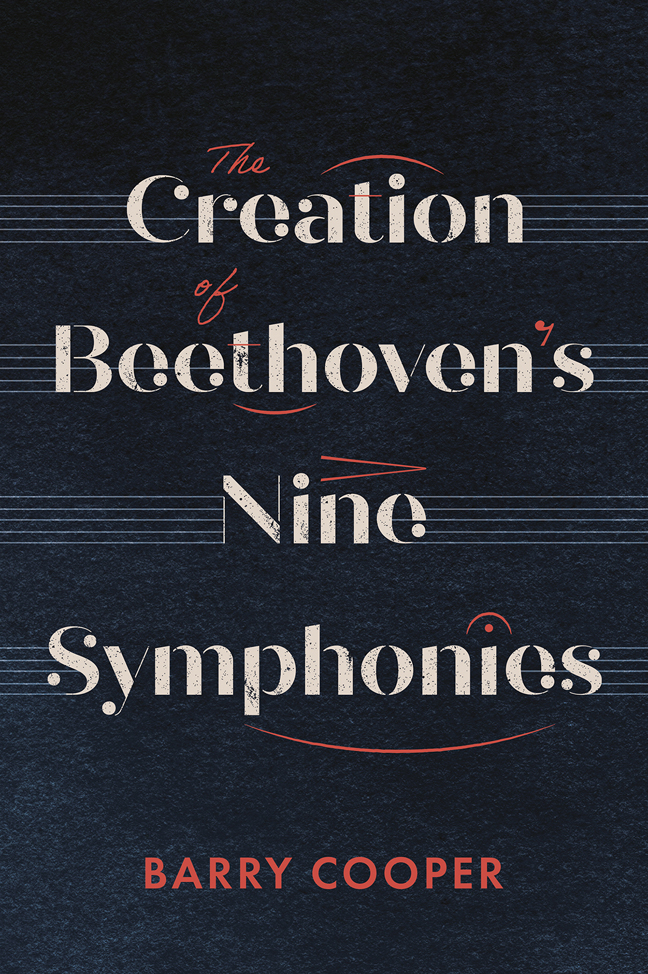Book contents
- Frontmatter
- Contents
- List of music examples
- List of tables and figures
- Preface and acknowledgements
- Abbreviations
- Introduction
- 1 The Long and Hazardous Road to the First Symphony, Op. 21
- 2 A Creation in Two Parts: The Second Symphony, Op. 36
- 3 Elevating the Genre: The Third Symphony (Eroica), Op. 55
- 4 The Oppersdorff Connection: The Fourth Symphony, Op. 60
- 5 Motivic Intensity: The Fifth Symphony, Op. 67
- 6 ‘More an Expression of Feeling than Painting’: The Sixth Symphony (Pastoral), Op. 68
- 7 ‘Great, Exalted’ Work: The Seventh Symphony, Op. 92
- 8 ‘Just Because it is Much Better’: The Eighth Symphony, Op. 93
- 9 The Philharmonic Connection: The Ninth Symphony, Op. 125
- 10 Epilogue
- Bibliography
- Index of Music Manuscripts
- Index of Beethoven’s Works
- General Index
1 - The Long and Hazardous Road to the First Symphony, Op. 21
Published online by Cambridge University Press: 02 March 2024
- Frontmatter
- Contents
- List of music examples
- List of tables and figures
- Preface and acknowledgements
- Abbreviations
- Introduction
- 1 The Long and Hazardous Road to the First Symphony, Op. 21
- 2 A Creation in Two Parts: The Second Symphony, Op. 36
- 3 Elevating the Genre: The Third Symphony (Eroica), Op. 55
- 4 The Oppersdorff Connection: The Fourth Symphony, Op. 60
- 5 Motivic Intensity: The Fifth Symphony, Op. 67
- 6 ‘More an Expression of Feeling than Painting’: The Sixth Symphony (Pastoral), Op. 68
- 7 ‘Great, Exalted’ Work: The Seventh Symphony, Op. 92
- 8 ‘Just Because it is Much Better’: The Eighth Symphony, Op. 93
- 9 The Philharmonic Connection: The Ninth Symphony, Op. 125
- 10 Epilogue
- Bibliography
- Index of Music Manuscripts
- Index of Beethoven’s Works
- General Index
Summary
Adagio molto – Allegro con brio
Andante cantabile con moto
Menuetto: Allegro molto e vivace
Adagio – Allegro molto e vivace
First steps along the road
There is no evidence that anyone else requested, let alone commissioned, a first symphony from Beethoven. The reason he attempted to write one appears to have been purely internal: his sense of obligation to compose, and his desire to master all branches of composition from the simplest to the most advanced, with special concern for the latter. The symphony was, in his mind, the foremost branch of instrumental music, as already noted, and so it was natural that he would gravitate towards it.
Sketches for the actual First Symphony are almost totally lacking – the relevant sketchbook must be lost, but it is worth tracing the long road that Beethoven took in preparation for his first attempt at this pre-eminent instrumental genre. With the models of Haydn and Mozart before him, he was surely hesitant to rush into competing with them, and so his preparations were lengthy and diverse. Orchestral music was mastered through other genres – concertos, orchestral dances, and vocal music with orchestral accompaniment; meanwhile what was regarded as purest symphonic style – short motifs developed intensively, rather than long, lyrical phrases or a parade of different ideas – was explored in other genres such as the piano sonata. At the same time, Beethoven was also sketching themes for possible symphonies, as a third strand in his preparations.
Beethoven’s earliest known idea for a symphony is a draft in C minor and 3/4 metre in piano score (Hess 298 or Unv 1), headed ‘Sinfonia’ and dating from some time between 1786 and 1790 – most probably 1788. It occupies the whole of one side of a page and proceeds almost to the end of the exposition of the first movement. The draft of 111 bars begins on what was originally a verso, and so it may well have continued on the now lost opposite page of a bifolio – perhaps even to the end of the movement on another page. Two variant sketches for short passages appear on the recto (the current verso). The first subject is borrowed direct from the main allegro movement in his Piano Quartet in E flat (WoO 36 No. 1) – originally the second in a group of three piano quartets that are dated 1785 in the autograph score.
- Type
- Chapter
- Information
- The Creation of Beethoven's Nine Symphonies , pp. 19 - 34Publisher: Boydell & BrewerPrint publication year: 2024

